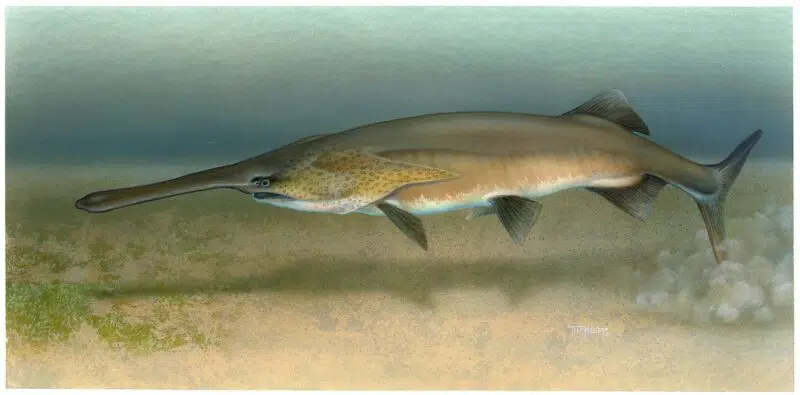Do you want to learn about Animals and Wildlife in South Dakota?
It’s not a question of whether or not there are animals and wildlife in South Dakota. Instead, it is a question of what type of wildlife there is. South Dakota is one of the native states in the United States with species of various diversities.
Animals in South Dakota have different habitats like lakes, rivers, mountains, and grasslands. These habitats have various wildlife such as coyotes, bison, prairie animals in the Mississippi river, birds, etc.
Which animals are there in South Dakota? Where are the best views of the animals? Which animals would you instead observe from a safer distance? What are the state bird and the state fish? Well, this article is the article for you!
Tour guides are also available in the national parks and other attraction sites in South Dakota for those who are not as daring.
Click below to jump to any section on animals in South Dakota:
Background South Dakota State
South Dakota is in the center of the country. The beauty and the numerous tourist attraction sites are astonishing, and the Black Hills provides the most heartbreaking outdoor experience. In this area, tourists discover things ranging from significant monuments to underground caves.
When listing the places to visit in South Dakota. The mountain is a habitat of unique and hard-to-find creatures like the rocky goats and the panthers, to name but a few.
The Badland National Park is another breathtaking site in South Dakota. The park has unique pinnacles and results resulting from sand and clay erosion. Othergreatstonishing sites, Bison are seen roaming the park freely.
Custer State Park is also found in South Dakota. Here, a wide range of different wildlife exists peacefully. The Bison are the main tourist attraction animals in this region, and the park has challenging trails to be enjoyed by hikers. The Wildlife Loop Road is another ‘must see’ attraction point in Custer Park. As the animals in this park are primarily active in the morning and late evening, visitors are advised to make a point of availing themselves at this time.
What are the Animals in South Dakota?
From the climatic conditions in this area, it is easy to tell the wildlife in this region. The temperate grassland state is filled with many tree-filled mountains and hills, rivers, and lakes. A variety of different species exist in other climatic conditions and geographical locations,on which is divided between semi-arid and humid continental climates.
The national grasslands in South Dakota are a number, the national forests are two, and the protected National Park Service sites are countless. There are no urban areas in the state which makes it once it comes to being for various varieties of wildlife. The state fish of the state is the Walleye, the state bird is the ring-necked Chinese pheasant, and the official animal is the Coyote. There are other wild animals in this state as well.
Mountain Goat
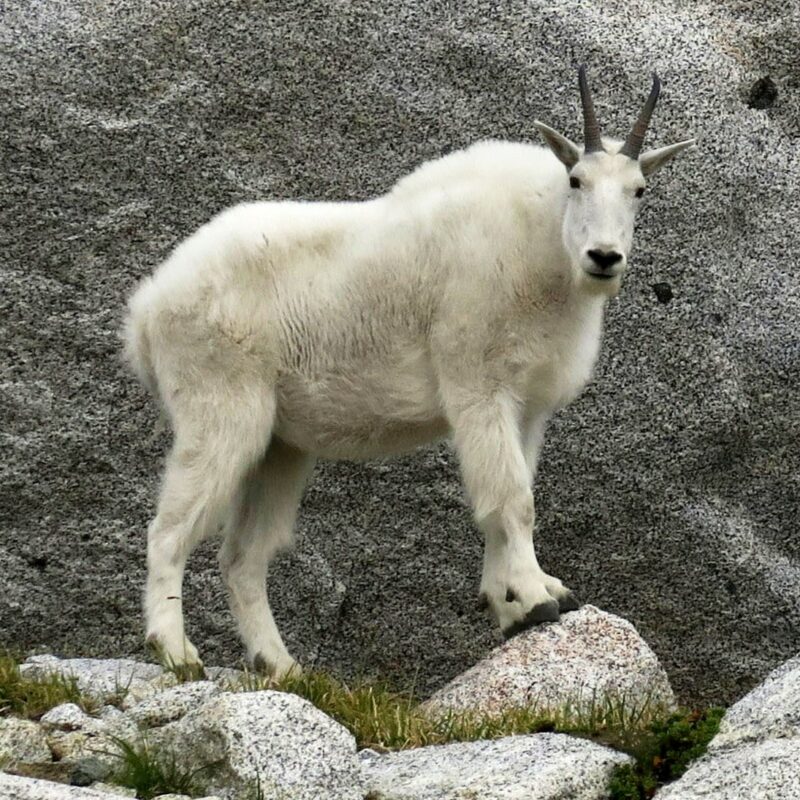
As earlier discussed, South Dakota has plenty of hills and mountains which happens to be the habitat of unique wildlife not found elsewhere in the state. The animals in these regions have adapted to the higher elevations and the climatic conditions in the mountains.
As crazy as it sounds, goats are scavenging Mt. Rushmore in South Dakota. Although the mountain goats are not native, they are adapted to the rocky hills of South Dakota. It is believed that the goats in this region are descendants of six escaped goats.
The goats escaped in the 1920s from a zoo in Custer State Park. The best time for checking out these animals is in the mornings when they are seen strolling the side of the mountains.The rocky goats are sure-footed and inhabit the alpine environment of North America.
They have unique climbing abilities and have hooves that are cloven and spread toes to improve their balance. They are powerful creatures and can j12 feet to 12 feet in a single jump. They have long and warm coats and distinctive beards that protect them against the cold climatic condition of South Dakota. During the hot sump conditions, the goats shed off these coats as an adaptability mechanism.
The female rocky goats are called their young ones and are known as kids. They move in small herds of about 20 animals for most of the year. The males are known as billies and are usually alone for the better part of the year.
Just like humans, the rocky goats give birth to one or two kids. They feed on mosses, grasses, plants, and all alpine vegetation. Both the males and females have horns and sometimes, during the mating seasons, the males use these horns to fight rivals.
Best place to find Mountain Goats
The primary habitat of the mountain goats is at Mt. Rushmore where they are estimated to be over two hundred goats in the area. The best time for checking out these animals is in the mornings when they are seen strolling the side of the together with other animals in South Dakota.
Mountain Lion

The lions in this region are widely known throughout the continents, and they are also known as the panthers, pumas, or cougars. These types of lions are hard to find as they are sneaky and nocturnal. The lions have been estimated to be approximately 300 in all of the State’s hills.
Where to find Mountain Lions
The mountain lions are found in the black hills of South Dakota. However, National Gap Analysis states that pumas can exist elsewhere within the state. The Black Hills are an extension of the Rocky Mountain found in west-central South Dakota.
The American Red Squirrel
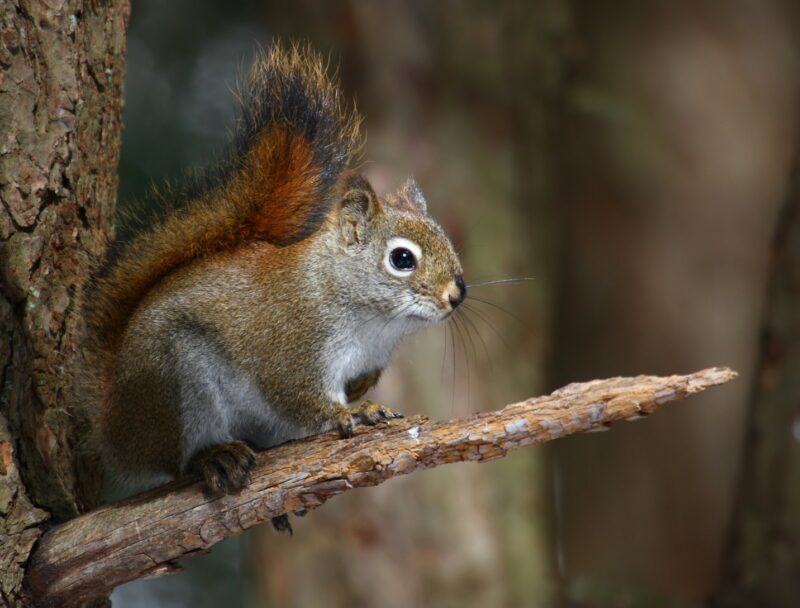
American red squirrels can be distinguished from the other north American squirrel hair size. Their size is slightly smaller; their overall length from the head to he tail is approximately 27-35 cm long. Thebehaviorandheir red fur with a white under is also different. They are known as red squirrels in the areas where they are native.
Since their introduction in Newfoundland and Labrador, they have been widely distributed in the province. They are abundant and mostly not of concern throughout their range. They have survived in the area for decades and multiplied with time.
American red squirrels are granivores. They feed on seeds of different fruits, its such as strawberries but can opportunistically incorporate other types of food into their diet. White spruce seeds comprise 60% of red squirrels but they can also feed on spruce needles, es, buds, and mushrooms. When the spruce matures, the red squirrels harvest them, keep storage for the winter, and reproduce next spring.
American red squirrels ovulate spontaneously, whereas females only enter the estrus cycle for one day. The female leaves its territory to announce its ovulation state. During this period, the male,s in matin,g chase the female squirrel. The male mates with the female in turns, and eventually, gestation starts. These animals live in nests commonly constructed in tree branches using grass.
The red squirrels mark their territories; they can only be seen in a group during mating periods and between the mother and the offspring before dispersal when they are chased away to live independently. The juvenile red squirrels must acquire a vacant territory during their first winter for survival. They experience a severe mortality rate at early ages, and however, their survival mechanism develops after attaining about three years.
Places to find American Red Squirrels
American rsquirrelsrel can be found in places like the Terra Nova National P,aandith other animals found in Newfoundland and Labrador.
Prairie Dogs
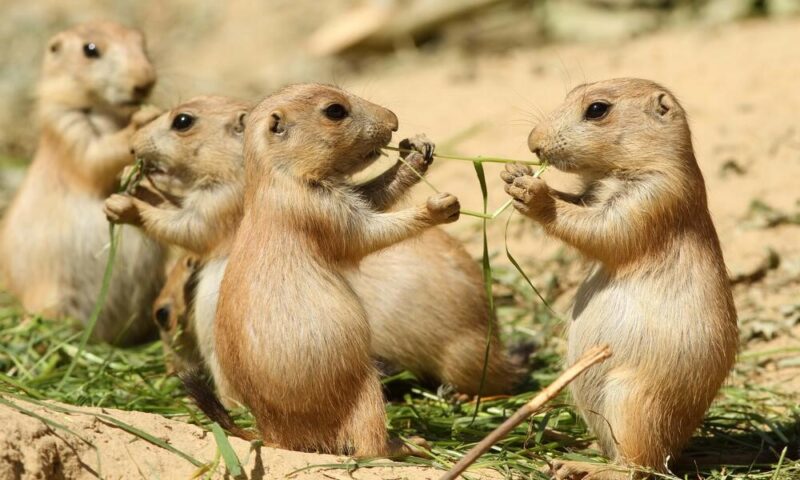
The Great Plains, a region in South Dako,ta State is found between the Rocky Mountains and the Mississippi River. The animals in this region have adapted to the changing climatic conditions in this area. The weather alternates between hot summers and cold winters. In the summer, the animals search for water and food forry long distance. The animals in this region are the Bison and the Prairie Dogs.
Although there are five different species of prairie dogs in North America, there is only one typical prairie dog in South,h Dakota known as the black-tailed prairie dog.
The dogs live in small burrow groups known as the colonies. The dogs are very intelligent to the extent of coming up with different calls for different predators that are different from the calls made once it is safe to the outside.
Where to find Prairie Dogs
The best location to view the prairie dogs is at Roberts Prairie Dog Town in South Dakota. The town is found in the badlands, and this is the place to be for a breathtaking adventure of a lifetime. You can also find them in the Wind Cave National Park grasslands near Bison.
Bighorn Sheep
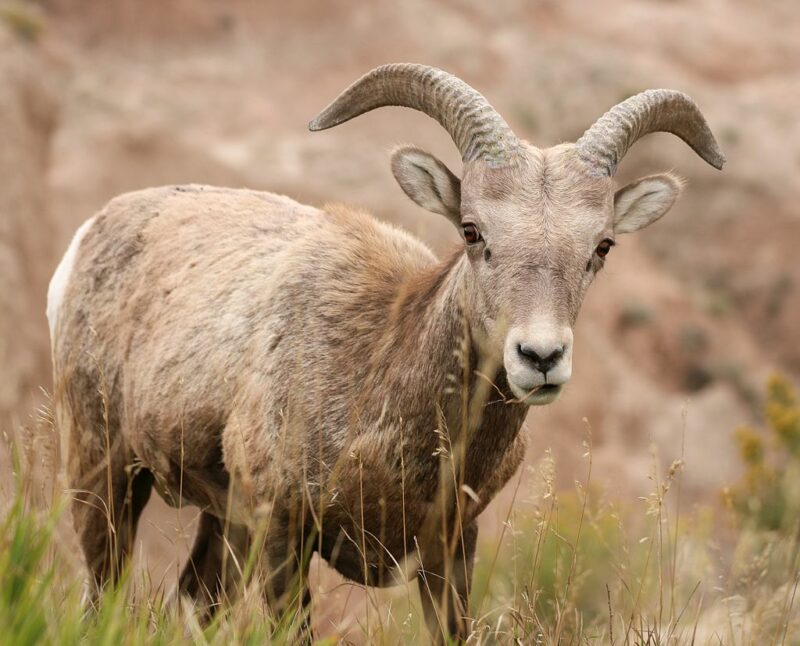
Their eyes are on the forward side of, the head which provides them a good range of vision.
Another species of wild sheep is known as the Dall sheep which is also a wild sheep. Some research says that bighorn sheep are one species from the other three subspecies of wild sheep like Rocky Mountain big horn sheep, Sierra Nevada Bighorn Sheep,and California big horn sheep. Males have large and curved shaped horns, which are 14kg in weight.
Sheep that er in age have more massive horns which canmeters 0.9 meter in length with a circumference from base are ameters 0.3 meter.
Where to find Big Horn Sheep
They are found inthe west mountain region of North Dakota. Theymostlylives in mountain region,s sothey can be easily found in areaswithe mountains alongside other creatures in South Dakota.
Big horns are prey toa large number of animal,s so they canbe easibe ly found in grassland areas the in sea,son anthe d in winter s,eason they can locatea d in sheltvalleysalley alongside other animals in North Dakota. They are located in steep Badland regions along with Little Missouri River.
Antelope
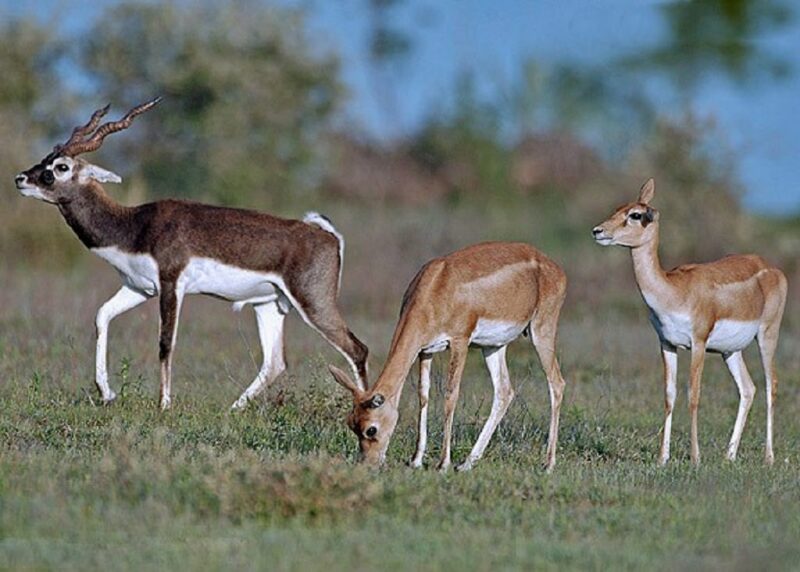
Antelopes have adjusted to a wide range of biological spe,cialtishiftingus shift in their size, shape, movement, diet, social association, and anti-predator technique. Regardless of the variety of variations, one significant speculation can be made. There is an apparent distinction between gazelles of shut natural surroundings aof open environments. The previous (e.g., duikers, reedbucks, and bushbu,cmostly,ost part little to medium-sized creatures adjusted for development the through undergrowth, with overdrumpsoprump, an adjusted back, and short legs.
This conformity is adjusted to speedy beginnings and a jumping, evading run, which is the way cover-subordinate impalas whose first line of safeguard is camouflage attempt to get away from hunters that opportunity to track down them. These animals in Nevada have a tinge covering, and they are alone, residing alone or in mated matches on home reaches shielded as domains.
They are programs of foliage as opposed to slow eaters of grass. Paradoxically, pronghorns of open territories ,amostlyart medium to huge grass eaters. They are worked for speed, having level backs with long, similarly created appendages. Their shading is uncovering. They have a gregarious social association and a mating framework given male territoriality.
Elands represent more than 66% of the roughly 135 tempty-hornedy horned ruminants (cud chewers) in the family Bovidae, which additionally incorporates steers, sheep, and goats. One gazelle, the Indian blackbuck, bears the Latin name Antilope cervicapra. In any case, pronghorn is certifiably not a scientific classification, yet a catchall term for a shocking assortment of ruminating ungulates going in size from the minute regal impala to the Goliath eland (800 kg)
The North American pronghorn eland looks and acts simtoar as a gazelle yet has a place in a different family, the Antilocapridae. Africa, for certain 71 species, is the landmass of elands. Just 14 species occupy the whole continent of Asia, and everything excepisthem are individuals from the gazelle clan.
As in all of Bovidae, all male elands have rangingrange from the short spikes of duikers to the wine tool hornmore than of 160 cm [63 inches] long) of the more noteworthy kudu. 66% of female gazelles bear horns; they are perpetually more slender and generally more limited thamalesle.
Where to find Antelope in South Dakota.
Antelopesliveg in grasslands, wooded area,, andn areas with heavy vegetation.
Bison
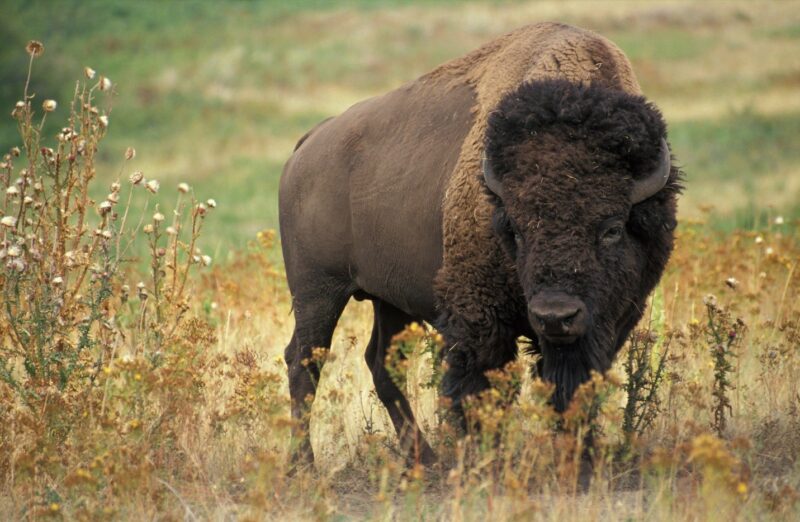
In the late 1980s, the Bison were also extinct due to overhunting in North America. Recently, have beeny are found in large herds roaming the national parks in South Dakota; Badlands National Park, Wind Cave National Park, and the Custer State Park. The bison are very comfortable in Custer State Park and have become accustomed to cars frequently bringing in tourists.
Bison are usually confused with Buffalos. Just to make it clear, a bison is not a buffalo. They both have large bodiesand , horns and are ox-like butthey are two different creatures. The buffalos are native to Afric,a and As, andnd the bison are native to North America and Europe.
Where to find Bison
The Bison can be found in the Badlands National Park, Custer State Park, and Wind Cave National Park. The Bison are common along the Wildlife Loop Road in Custer State Park. The drivers are already used to sitting in traffic jams caused by the animals carelessly crossing the road,s afraid of the moving vehicles.
In the badlands, the Bison varoaming the park’s northern edge park near Sage Creek Rim Road. They are also found in the grasslands of Wind Cave Park near the prairie dogs and forest edges nearby other animals in South Dakota.
Ring-Necked Chinese Pheasant
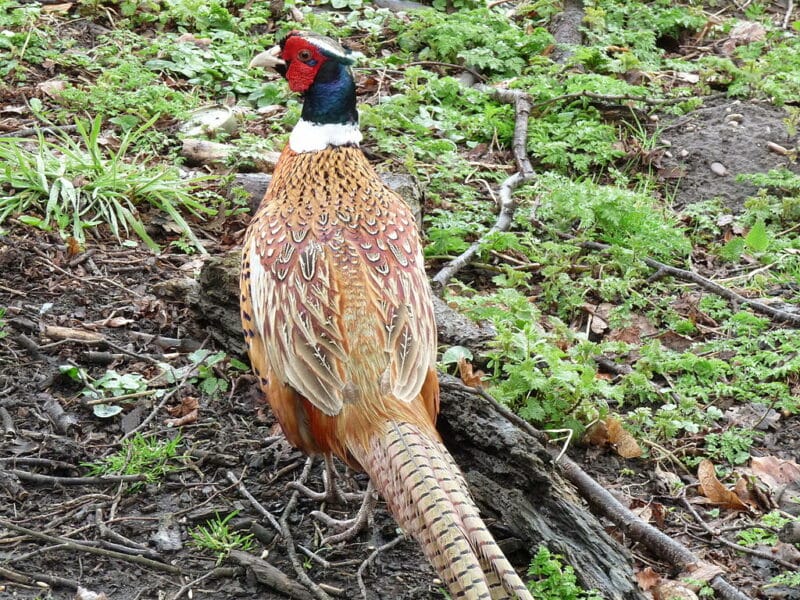
As earlie,r the ring-necked Chinese pheasant is the official bird of the South Dakota State. These birds are rarely found in other places around the wetlands of South Dakota.
The Chinese ring-necked pheasant birds are the official state birds of South Dakota. They are also native to Asi,a although they are considered a game species.
South Dakota is their primary and perfect habitat due to the availability of a lot of food to eat and abundant grasslands. The male pheasants are called the rooster, and they are brightly colored with green, red, and orange shades. The females are called hens and are brown and tan.
American Goldfinch
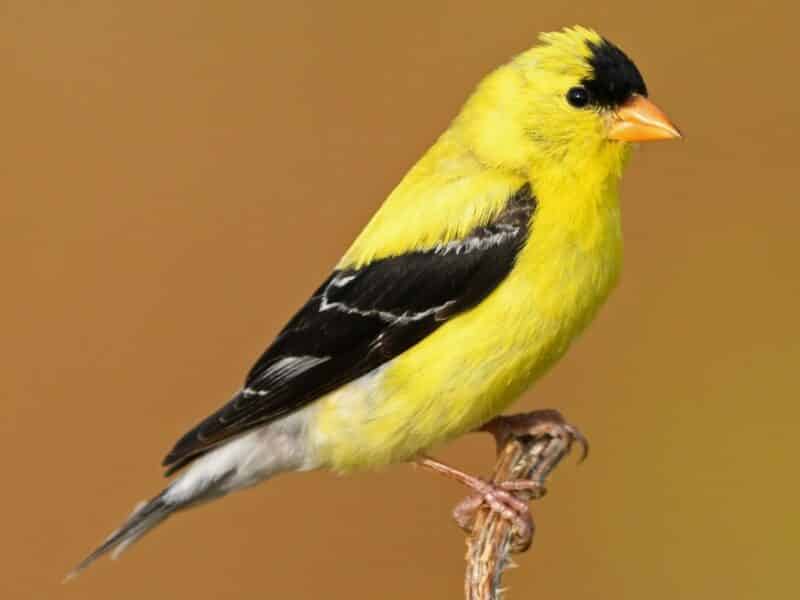
There are no birds as colorful as the male American Goldfinches especially in the warm months in South Dakota. They have bright yellow backs,and medium-sized black tail,s with long black wings. The female differs as they have a much dull coloratias compared to the male.
However, both the male and the female adopt a brown plumage. They prefer to have overgrown and weedy areas as their habitats. They can also be found in orchards, backyards, and parks. These are worthy mentions in our list of animals in South Dakota.
Prairie Grouse
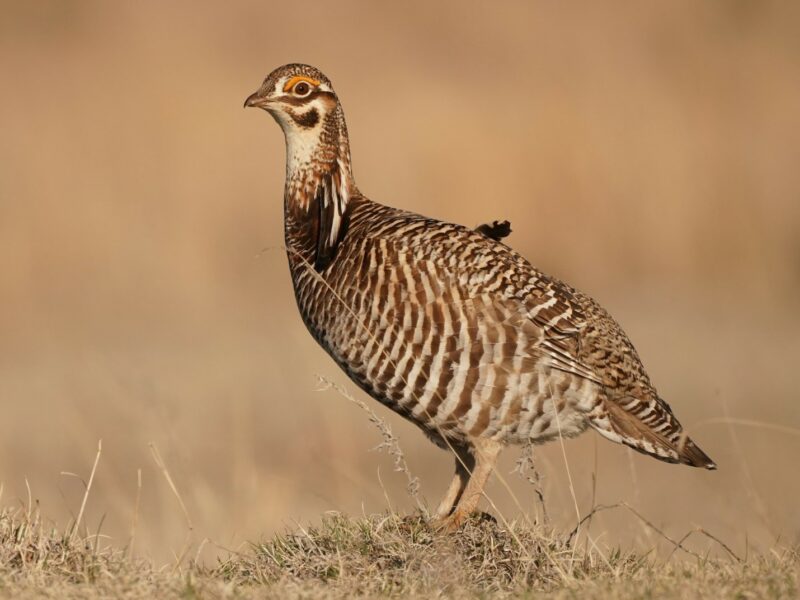
Prairie grouse is a collective name used for prairie chicken and sharp-tailed grouse. The native birds are closely related and are found in the prairie landscapes in Western and Central South Dakota.
Hunting of these birds usually occurs in the grasslands and can also occur in the field edges and the cropland. The birds are most often found in covey, which increases throughout the seasons.
Waterfowl
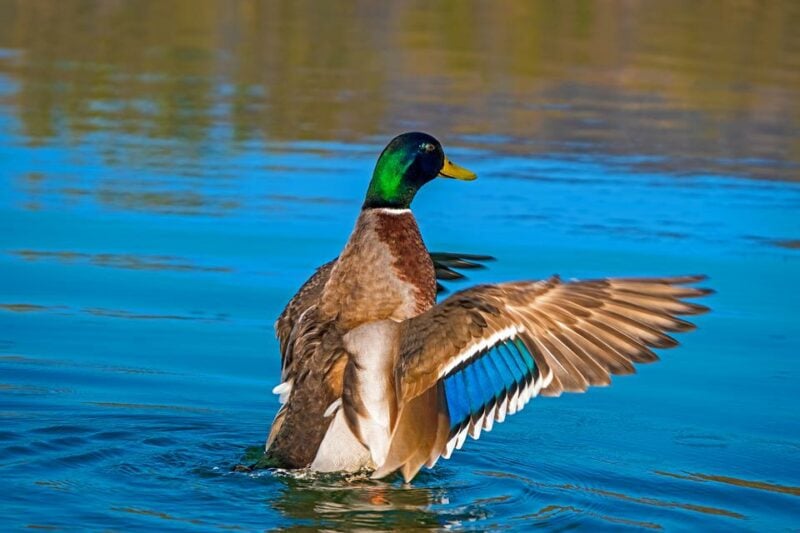
Waterfowls are birds found in South Dakota and are also known as Anseriformes. They exist in thrnt families, i.e. the Anhimidae, Anatidae, and Anseranatidae. The most prominent family is the Anatidae,, where the waterfowls, ducks, swans, and geese fall.
Dakota is the perfect habitat for these birds, geese, ducks, and other birds addicted to water. To the east of South Dakota is the Prairie Pothole Reg,ion surrounded by lponds and sloughs, making make a good nursery for godlings and ducks.
Red-bellied Woodpecker
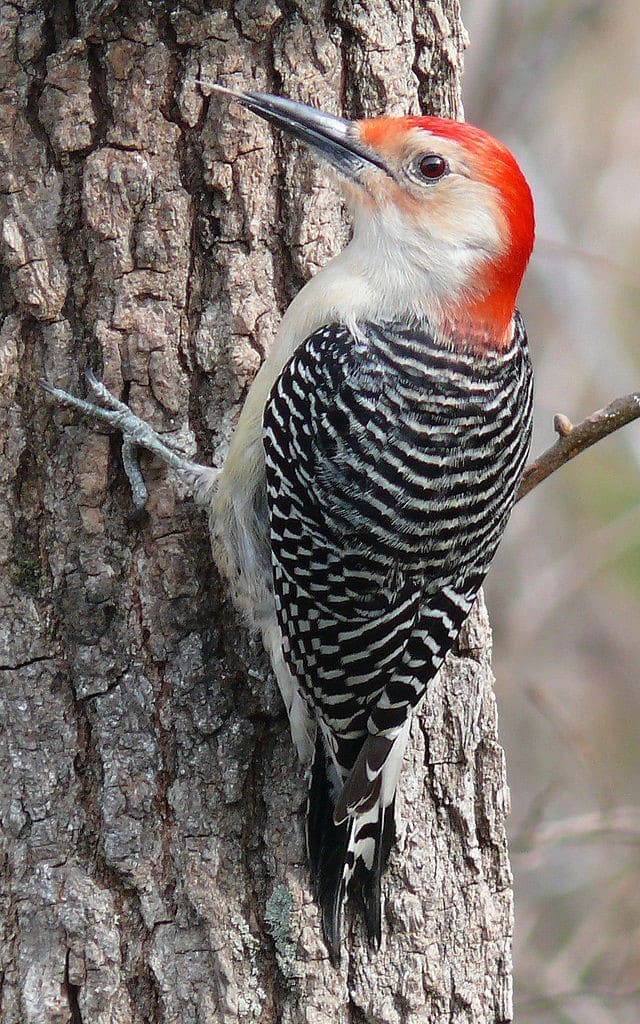
Mourning Dove

The mourning doves have a light brown or gray coloration on their backs. The wing is large and broa,d and the tails are long and pointed.
Mourning doves are unique and prefer shallow woods, farms, and parks.Don’tt be surprised to come across a dove or tw when roaming the cityo. Their primary diet is corn, nyjer thistle, and white proso millet.
Walleyes
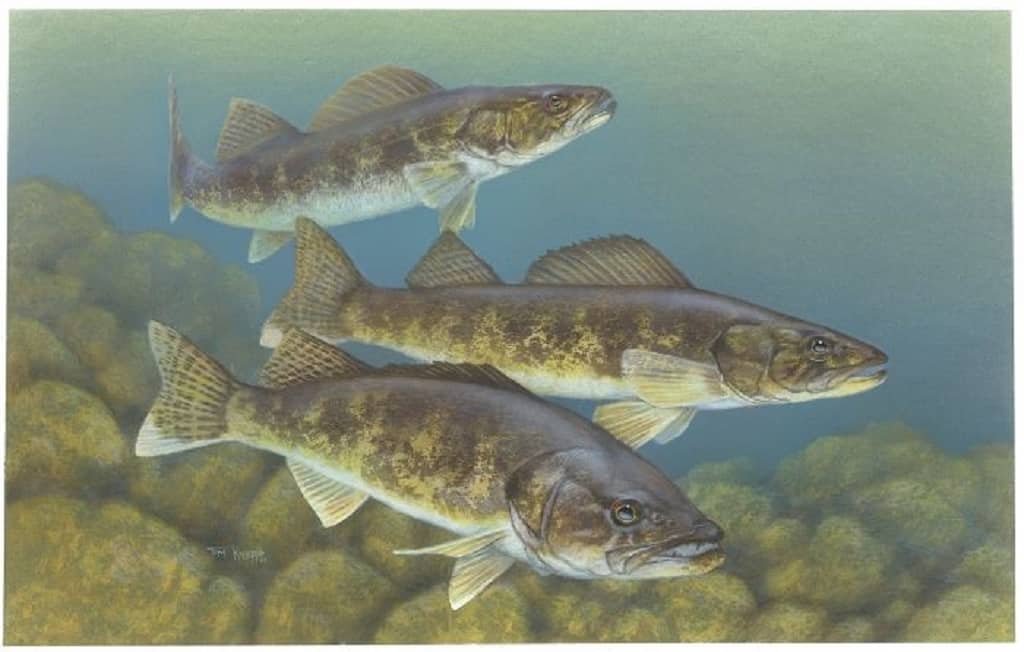
Walleyes are also called yellow pickerel or yellow pike. Walleyes are common fish in the Missouri River in South Dakota. These fish have an extensive lifespan of up to 20 years and can travel a very long distance a night to find food.
The diet is limited to small insects, crustaceans, and other small fish.
Paddlefish
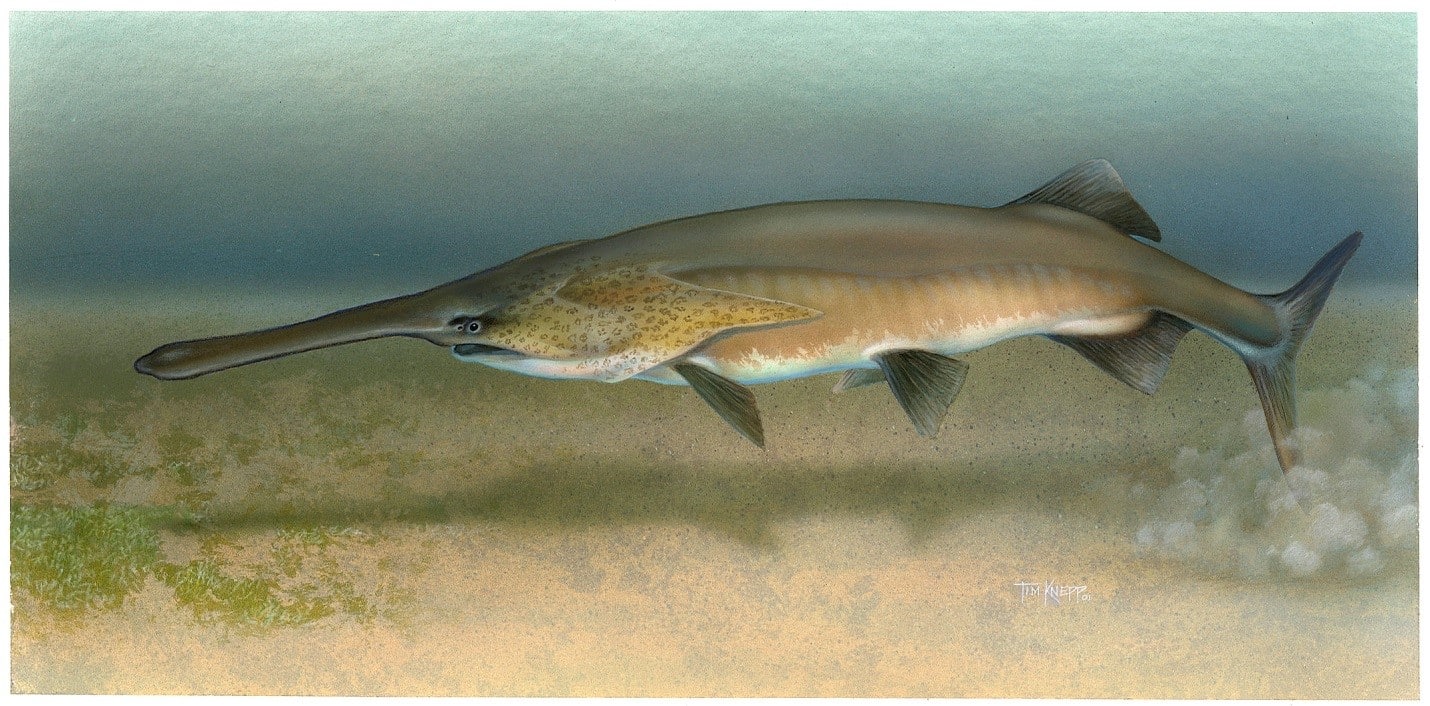
The best location to find a paddlefish is in the open waters with freely and unchanneled rivers. The paddlefish is the oldest and the weirdest fish in South Dakota’s lakes, and these fish have had minimal to no evaluation for over a 125million years.
They use signals called rostrum to pad,dle and their food is plankton. The signs are electric. Their tail is divided unequal,y and they have no scales or teet,, soy they are considered weird. Their bodies are tubular-shaped, and the paddles are large and shaped like a snout.
In Gavin’s dam, a limited number of licenses is given to residents and non-residents to snag a few fish in Lk. Francis Case limited license is granted to only the residents.
Summary of Animals in South Dakota
South Dakota is probably the best place to visit. Other than the astonishing and unique animals in the state, there are also monuments and other incredible sites worth seeing.
If you enjoyed reading about the animals in South Dakota, check out Animals in North Dakota and Animals in Kansas next! You might also like Animals in Louisiana.
- 10 Most Endangered Animals - April 15, 2024
- Top 10 Cutest Fish in the World - April 15, 2024
- 16 Top Predators in the Food Chain - April 12, 2024

